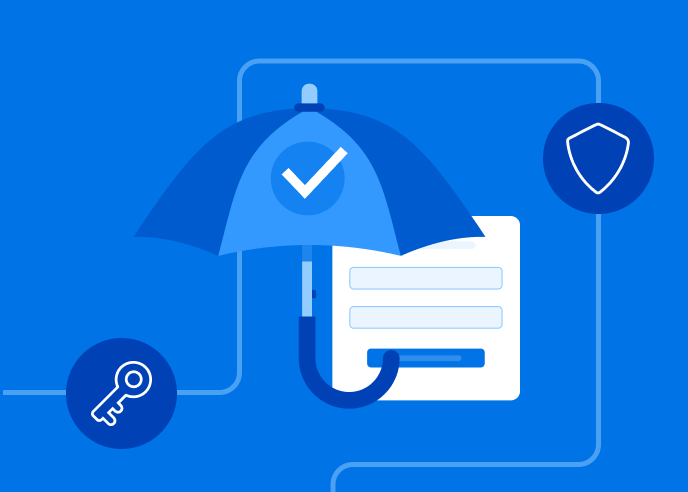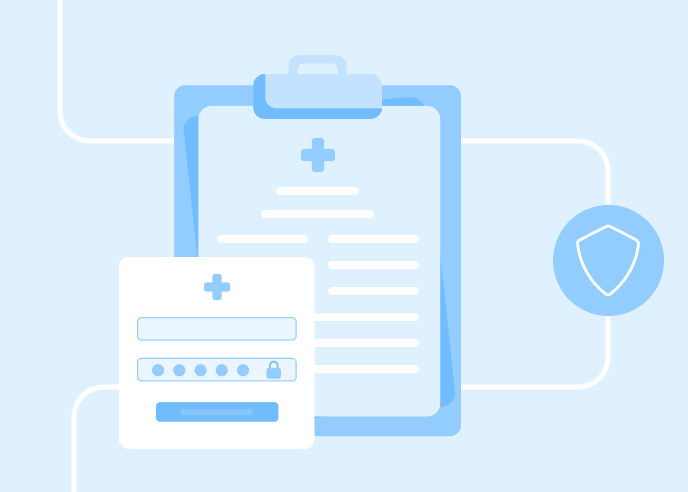It’s 2025 and the threat of a cyberattack is constant, and organizations faced with data breaches experience damage to their finances and reputations. While it’s clear that a strong, proactive stance on cybersecurity is crucial for any organization, the complexity of this topic leaves many feeling confused and overwhelmed. So, it comes as no surprise that some companies still make dangerous and costly mistakes when trying to protect sensitive data.
At FormAssembly, we’re dedicated to maintaining the highest level of cybersecurity and compliance and staying up-to-date on emerging best practices, trends, and threats. We prioritize protecting the sensitive data entrusted to us by our employees and customers. In taking this stance, we also actively educate on the importance of cybersecurity to help minimize the following mistakes.
Mistake #1: Not staying up to date
Not staying up-to-date can mean various things in the cybersecurity world, from failing to update software to not knowing current threats and trends. Regardless of what is out of date, all of these can put an organization at a greater risk for a cyberattack.
How to prevent it
It’s not possible for a company to prevent every cyberattack, but by staying updated, threats can be minimized or resolved as quickly as possible. An organization’s security team should prioritize strong protocols for patching operating systems and updating all software. This “network hygiene” ensures that the systems used by employees and customers maintain the highest level of security and data protection.
Along with frequent updates, companies should also prioritize routine audits to discover any outdated or insecure software, and implement plans to replace them. Another best practice is to follow cybersecurity leaders, such as the National Cybersecurity Alliance, for the latest news on trends, changes, and threats. While this is a time investment, it can also provide an additional level of awareness that could save your company from a cyberattack.
Mistake #2: Not properly training employees
Numerous studies point to the risk of untrained employees causing a security breach at their company. In fact, the majority of data breaches at organizations are still due to human error, which generally means an employee unknowingly released sensitive information during a hacking attack. Companies make an enormous mistake by focusing solely on outside threats and disregarding the potential for inside employees to cause a breach. With hacking attacks now more prevalent than ever before, companies cannot afford to leave their employees in the dark when it comes to awareness.
How to prevent it
Sometimes, insider attacks are the malicious intent of an employee, but the majority of the time, data breaches happen because of a lack of awareness. While not all threats can be eliminated with better awareness, providing routine cybersecurity training and simulations can certainly minimize the risk. All employees should be encouraged to take a strong stance on cybersecurity through a culture of awareness and education.
In your company’s cybersecurity awareness training, be sure to keep your team at the forefront of emerging threats and trends. By keeping your training sessions brief, frequent, and engaging, it will be easier for employees to retain this important information. Learn how our security team conducts cybersecurity training with our own platform here.
Mistake #3: Not preparing for a cyberattack
No company ever wants to believe that a hacker could get past their security system. But the reality is that companies will fall victim to cyberattacks at least once. It’s better to be prepared for a threat than to wrongfully assume that your organization is immune to such an attack. A lack of preparation could have costly consequences to both revenue and reputation if a company must go offline as the threat is resolved.
How to prevent it
Instead of underestimating the likelihood of a cyberattack, companies need to create and maintain a cybersecurity policy and incident response plan in case of a breach. The good news is that with the proper resources, creating a strong cybersecurity policy isn’t as difficult as it sounds. First, it’s important to understand what assets need protection and whether specific laws and regulations, such as HIPAA or GLBA, apply to your organization.
Then, determine common threats and what rules need to be in place to protect against cyberattacks. Preparing and planning for threats should also include an incident response plan, so those involved have a step-by-step plan in the event of a cyberattack. This detailed plan of action provides numerous benefits, ensuring minimal downtime after a breach while maintaining confidentiality and company trust.
Mistake #4: Not using software that prioritizes security
Any software installed on an employee’s work device is vulnerable to threats, especially if this software is not approved, regularly audited, or updated. Similarly, not all software is secure by default and could quickly put an organization at risk. Without protocols in place, an employee may download insecure software unknowingly, which can contain vulnerabilities.
How to prevent it
To keep everyone safe from insecure software, only deploy sophisticated solutions that provide a high standard of security. It’s also a best practice to only allow software that has been approved by an IT or security team and to have all new software inspected and approved before installing. Along with monitoring which software and solutions employees are using, it’s important that these go through regular updating and vulnerability scanning to maximize their security and compliance.
Mistake #5: Not collecting data in a secure manner
Organizations that collect any type of information about their customers cannot compromise on security and compliance for these processes. Losing this data in a breach has serious consequences, not only for the company itself but also for the customers involved. Without the proper administrative controls, secure connections, or compliance standards, data collection cannot be completed securely by employees, putting everyone involved at risk.
How to prevent it
It’s critical that all companies involved in collecting user data know the security risks as well as the compliance and privacy regulations that apply to their organization. Depending on the industry, your organization may need to comply with HIPAA, GLBA, GDPR, and FERPA, among others, to avoid serious penalties. Along with complying with relevant laws and regulations, it’s important to complete routine compliance risk assessments to further ensure the security of sensitive data.
Additionally, the web forms used to collect data must have the right authentication, encryption, and data integrity protocols to optimize security. When collecting data through online forms, it’s best to follow the concept of least privilege—using admin controls to limit user access to only those who require the information or are authorized to make changes. End-to-end encryption is also critical to ensure that data is safe as it travels between web forms and other systems.
Avoid data security mistakes with FormAssembly
At FormAssembly, we understand the critical importance of keeping data safe. Our team works together to foster an environment of cybersecurity awareness and dedication to the highest standards. We follow the NIST Cybersecurity Framework, which provides standards and guidelines for minimizing and managing cybersecurity risks. Our platform is also compliant with GDPR, HIPAA, FERPA, PCI DSS Level 1, and FedRAMP.
Along with routinely providing cybersecurity awareness training for our employees, we deploy both the IDS (Intrusion Detection System) and IPS (Intrusion Prevention System), with robust centralized logging practices for enhanced security. Across the industries our customers serve, we are dedicated to maintaining the highest level of security and compliance for our users.
Take a strong stance on cybersecurity
Don’t let your organization be at risk for a cybersecurity incident! Being proactive and prepared is the best stance to take when it comes to staying resilient against threats. Arm your organization with all the cybersecurity knowledge in our guide to collecting data in a secure, compliant way.


